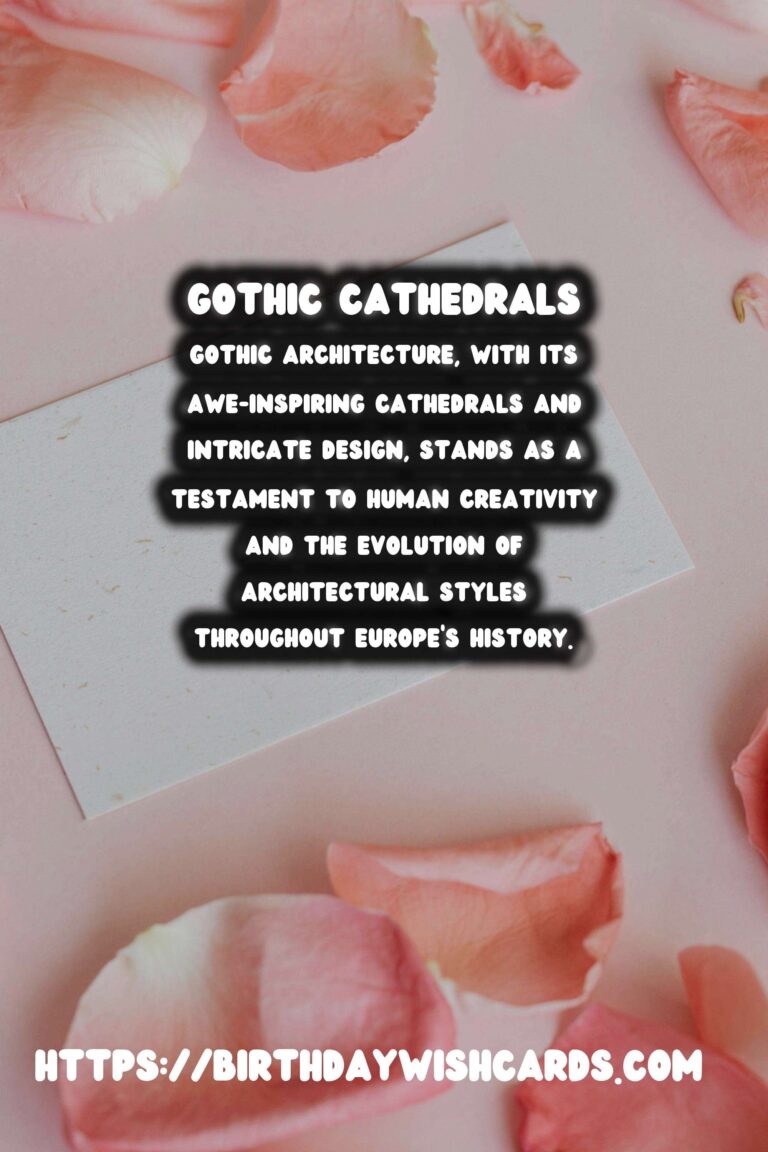
Gothic architecture, with its awe-inspiring cathedrals and intricate design, stands as a testament to human creativity and the evolution of architectural styles throughout Europe’s history. Born in the Middle Ages and flourishing in the 12th to 16th centuries, Gothic architecture transformed the European landscape with its towering spires, ribbed vaults, and flying buttresses.
Origins of Gothic Architecture
The origins of Gothic architecture can be traced back to the ambitious vision of Abbot Suger, the powerful abbot of Saint-Denis in France. In the 12th century, Suger sought to rebuild the abbey church in such a way that it would reflect the divine light of God. This vision gave rise to a new architectural style that embraced light, space, and intricate detail.
Key Elements of Gothic Architecture
The defining characteristics of Gothic architecture set it apart from its predecessors. The pointed arch, a key element in achieving the distinctive Gothic look, allowed architects to build higher structures with larger windows. The ribbed vault provided the structural framework for supporting roofs, while flying buttresses counteracted the outward thrust of the walls, enabling the construction of vast naves and expansive stained glass windows.
The Magnificent Cathedrals of Europe
Several cathedrals across Europe serve as prime examples of Gothic architecture’s sheer grandeur. The Notre-Dame Cathedral in Paris, famous for its stunning façade and rose windows, remains an iconic representation of the style. Likewise, the Cologne Cathedral in Germany, with its twin spires, showcases the heights of Gothic ambition and spirituality.
The Symbolism and Functionality
Gothic cathedrals not only symbolized the divine goal to reach towards the heavens but also served as vital centers for worship and community gatherings. The architecture itself was imbued with spiritual symbolism; the vertical lines and light-filled interiors were designed to inspire awe and uplift the spirit towards God.
The Decline and Legacy
By the late 16th century, Gothic architecture began to give way to the Renaissance style, which embraced classical simplicity. However, the legacy of Gothic architecture continued to influence architectural styles, leading to a revival in the 19th century known as the Gothic Revival. This resurgence reaffirmed the enduring allure of the Gothic aesthetic.
Conclusion
Gothic architecture remains a fascinating subject of study for both historians and architects alike. Its contribution to the evolution of church and civic architecture continues to be celebrated across the globe. As we wander through the historic cathedrals of Europe today, we are not just passengers in time, but witnesses to an era where architecture was a language of spirituality and innovation.
Gothic architecture, with its awe-inspiring cathedrals and intricate design, stands as a testament to human creativity and the evolution of architectural styles throughout Europe’s history. The defining characteristics of Gothic architecture set it apart from its predecessors. 









#GothicArchitecture #EuropeanCathedrals




